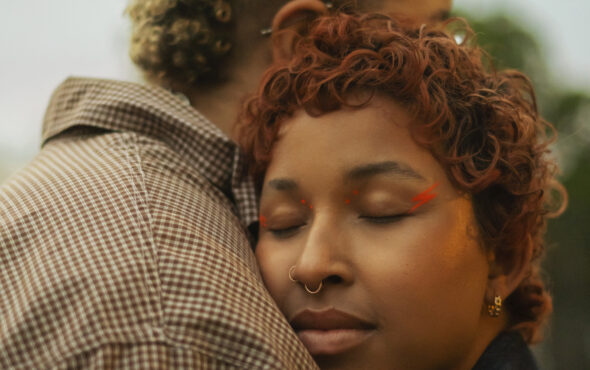
Growing up LGBTQIA+ is like navigating a minefield, it’s a tumultuous time that differs from one individual to another. It is however, united by an unfortunate truth, that whatever your individual experience is, research suggests that by the end of it you’re at higher risk of mental health issues including but not limited to: depression, anxiety, suicidal thoughts and PTSD.
Yet, despite the overwhelming amount of data exploring how and why LGBTQIA+ people are at higher risk of poor mental health, amenities to combat this aren’t as readily available. Something as simple as how to find queer therapist can quickly become an overwhelming task, with little resources available via the NHS.
The lack of consideration for the community’s various specific needs can further deter them from pursuing treatment – with opportunities for misgendering over the phone or at the reception desk before you’ve even made it to a healthcare advisor. Other obstacles cis-heterosexual counterparts needn’t be concerned about, such as accessing mental health treatment at home, may not be an option for LGBTQIA+ people due to the close proximity of family members or housemates who they may not be out to.
“Different domains of oppression impact our experiences of mental health services and treatment.”
After historically being vilified and mistreated within the healthcare space, there’s undoubtedly still a sour taste of distrust in the mouths of LGBTQIA+ people. Due to this disparity, they’re either hindered from receiving the treatment they need because of prejudices or simple lack of knowledge, or discouraged from seeking healthcare altogether.
“Different domains of oppression impact our experiences of mental health services and treatment,” outlines author Micha Frazer-Carroll in Mad World: The Politics of Mental Health. “Whether you are poor, Black, a woman, a trans person, a disabled person, or a migrant, your identity will, to some extent, dictate how your distress is treated. It determines whether you are taken seriously, the type of care you have access to, whether you are treated violently or even killed when seeking mental healthcare.”
https://www.gaytimes.co.uk/originals/mental-health-resources-for-lgbtq-people/
Hardly hyperbole, given the complex history between the LGBTQIA+ community and psychiatry. Prior to changes in the Diagnostic and Statistical Manual of Mental Disorders (DSM), homosexuality and ‘transgenderism’ were viewed as mental illnesses – the latter by the World Health Organisation until as recently as 2019 – justifying discrimination, mistreatment, and cruel treatments such as chemical castration and lobotomies offered as ‘cures’. Even within the NHS, the controversial electroconvulsive therapy was a preferred form of treatment up until the 1970s.
While these barbaric practices have since been eradicated – though conversion therapy is yet to be banned in the UK – the modern healthcare landscape is just as difficult to traverse, especially for trans people. In 2021, a TransActual report revealed that 70% of respondents were impacted by transphobia in the healthcare space, with 14 percent were refused treatment altogether.
What is GSRD therapy?
In an effort to bridge the gap between the LGBTQIA+ community and the mental health care they deserve, psychotherapists Dr Meg-John Barker and Dominic Davies coined GSRD therapy. The all-encompassing term covers Gender – as it pertains to be people within and outside the binary, Sex – including sexuality, asexuality, as well as sexual behaviours such as BDSM, kink and fetish, and Relationship Diversities – inclusive of people on the aromantic spectrum, those who are polyamorous, sex workers etc.
“We used this as a more inclusive term to go beyond the alphabet soup and ensure that many other marginalised groups (like heterosexual kinksters, asexuals, people in poly relationships, and intersex folk) who might have been excluded from seeking help in mainstream or LGBTQIA+ organisations could find therapists able to support them,” Davies explains. “Our intention wasn’t that this would be a term for self-definition or to replace our hard won identities as lesbian, gay or queer people but more as an inclusive term for therapists to understand the wider range of marginalised people.” An amorphous term, GSRD has continued to evolve and expand its reach over the years as understanding in the biopsychosocial arena develops.
While this term broadly covers the experiences and needs of the LGBTQIA+ community, GSRD therapy can be equally beneficial for heterosexual and cisgender people too – both as clients and via training for therapists. As a pioneer of the term, Pink Therapy – a directory and vital resource for GSRD therapists and those seeking them founded by Davies in 1999 – is among a number of mental health organisations prioritising training of GSRD therapy. “We’ve helped get GSRD mental health on the agenda for many psychologists and psychotherapists. This has hopefully helped many of our community find skilled help and manage the stresses of being queer or trans,” Davies says.
For those choosing to specialise, its year-long international qualification covers the breadth of the term enabling those who complete it to provide much-needed affirming care for the community, while short, self-study options are also available for therapists who are seeking to top up their knowledge in the field. “We are all different and all have intersecting identities,” he continues. “My own experience as a white, queer, disabled, neurodivergent kinkster in an open relationship is going to be quite different to a married, monogamous gay man who is from a privileged background who retrained after working in banking. We ensure our courses include intersectionality and that explores racial and ethnic intersections among other identities.”
For queer psychotherapists like Chris Sheridan, it was apparent in their mental health education journey that working with marginalised groups was overlooked, prompting them to found The Queer Therapist – a UK-based online therapy service providing GSRD and neurodivergent-affirming therapy. “The treatment approach for working with these groups has a whole layer of complexity that wasn’t covered within the NHS, so not only were clients not forthcoming, but there was an absence of those clients,” they explain. “Our niche is working with the queer and neurodivergent communities which intersect massively. I will get clients who have identified as gay for years, but have questioned their gender and queer is a more fitting term. I’m definitely seeing a move towards a more expansive definition of what it means to be queer.”
What are the benefits of a queer-affirming therapist?
While the NHS is an invaluable resource in the healthcare space, it is sadly both underfunded and overstretched, leaving people who need urgent mental health treatment and support in desperate positions.
Despite national standards for talking therapy – guidelines set by National Institute for Health and Clinical Excellence – outlining that 95 percent of referrals should start treatment within 18 weeks, research released last year by The Royal College of Psychiatrists tells a different story. With over 1 million people on waiting lists for specialist mental healthcare and extended wait periods, 43 per cent of adults reported a deterioration of their mental health, with 78 percent seeking help from emergency services or crisis lines.
“Different domains of oppression impact our experiences of mental health services and treatment.”
After enduring long wait times, those fortunate enough to receive treatment are often allocated a therapist with no regard to their cultural background, identity, or specific needs – an important facet of seeing the benefits of therapy, as outlined by HH Strupp in a 1980 paper in The Archives of General Psychiatry. Researching the successes and failures of time-limited psychotherapy, he highlighted the importance of client participation, finding that those who were more willing and able to connect with their therapists yielded better results than those who did not.
Unsurprisingly, the same is true for LGBTQIA+ clients who have therapists with the same lived experiences as them, a luxury reserved for those who can afford to pursue therapy privately. “It felt like a shortcut to being able to discuss some of the aspects of gay life where I’ve struggled,” shares David, on his experience of queer therapy, after initial disappointment with therapists outside of the community. “Knowing that you’re talking to someone who has an understanding of the things that are more common among LGBTQIA+ folks like open relationships and wanting sexual compatibility as a bottom seeking a top. Not having heteronormative milestones projected onto your age or life stage is huge too.”
https://www.gaytimes.co.uk/life/lgbtq-mental-health-from-anxiety-to-abuse-how-to-better-protect-yourself-and-seek-support/
Similarly, having shared experiences with trans and gender non-conforming clients can create a safe and comfortable environment for invaluable insight. “I previously saw another therapist that was not a match and made me feel way worse. I left the office crying because I didn’t feel understood or that they could empathise with where I was coming from,” shares Jaylan on their experience. “I had been struggling with dysmorphia and I wanted to have a therapist that felt like they could understand some of the things I had been through as a queer person. It was scary at first but became really organic and it was super grounding. They gave me so much breadth around how I wanted to pursue being a human being.”
As well as improving bedside manner, providing safe spaces, and better connecting LGBTQIA+ clients with those providing mental health care, GSRD training is essential for providing the correct course of action for those in therapy, helping therapists to avoid potential pitfalls. “When you’re working with asexuality, there is a high risk of not deliberately falling into conversion therapy,” explains Sheridan. “If you’re not aware, you may be inadvertently practising conversion therapy by not working out if your client is asexual and where they fall on the spectrum.”
On the flipside, providing affirming care can be just as fulfilling for LGBTQIA+ therapists as it is for their clients. “There’s never a day that goes by where I don’t have some incredibly meaningful experience with a person,” Sheridan shares on their experiences of 15 years in the mental health field. “I feel incredibly humbled, privileged, and honoured to do that alongside people who are on the journey to ultimately working out who they are and to feel a sense of empowerment in owning their identities and feeling more confident as they move through the world.”
How to find a queer therapist
So, if queer therapy sounds like something you’d be interested in, where do you start?
Described by founder Davies as “the first point of contact for somebody seeking a therapist,” Pink Therapy’s directory of GSRD-trained therapists relaunched last year to encompass more identities – including those who are questioning, practise consensual non-monogamy, and intersex individuals. In addition to the more well-known CBT, there’s a variety of options to help you find the form of therapy that suits you best, as well as therapy for couples and families.
However, if you’ve had no previous experience of therapy – queer or otherwise – Sheridan suggests exploring Voda, an LGBTQIA+ mental health app, first. A mostly free resource, the app covers everything from body dysmorphia and internalised stigma to self- confidence and insecurities in relationships, while also offering some paid guided therapy, mindfulness exercises, and introductory programmes around calming anxiety and affirming your identity. It can be used in tandem with psychotherapy, as a useful starting point to hone in on areas of concern.
For those from lower-income backgrounds, organisations like The Queer Therapist and Rain or Shine offer sliding scale rates so that your means aren’t an obstacle to receiving the mental health care you need. Elsewhere, charities such as LGBT Foundation and Black Trans Foundation provide free therapy for communities most at risk, though spots are limited and highly in-demand. If you aren’t eligible or cannot find free resources in your local area, Mind’s non-exhaustive compilation of LGBTQIA+ mental health organisations may aid your search.
Regardless of your situation, Sheridan’s advice on finding a queer therapist is to approach it like you would dating. “Don’t expect to find the right fit straightaway,” they suggest. “Try a number of therapists – it could be 20-30 minutes, or a free consultation – and see how it feels. If it’s important to you, maybe you want somebody who reflects your values. You should be thinking about whether or not you have a good rapport with them, do you feel held in this space.”
If you are unable to access the support you need and are in crisis or feeling suicidal, it’s imperative to discuss with a doctor as soon as possible. Samaritans is available 24/7, 365 days a year, likewise Shout – a newer text-only service – can be accessed by those who might be unable to discuss their situation in their living arrangement.
This interview is taken from the January 2024 issue of GAY TIMES. Head to Apple News + for more exclusive features and interviews from the issue.


